7 Tips to Maximize the Marketing Team Productivity

Summary
Marketing teams don’t succeed by staying busy; they succeed by creating meaningful results. This article explores what productivity truly means in marketing, how to measure it, and how to eliminate the hidden blockers that slow teams down.
You’ll also discover practical strategies to boost performance, from setting clear priorities and building roadmaps to reducing meetings, automating routine work, experimenting with new ideas, and investing in continuous learning. With the right habits, tools, and focus, marketing teams can work smarter, stay creative, and consistently deliver high-impact results.
Teams don’t go to work just to fill hours, check tasks off a list, or take coffee breaks. Every team exists to create results, not to stay busy, but to be genuinely effective.
Productivity is what turns daily work into real impact, no matter the industry.
In this article, we focus on marketing team productivity: what it is, how to measure it, and the most effective ways to maximize it.
What is Productivity?
Productivity is the ability to turn time, skills, and resources into meaningful results with as little waste as possible. A productive team knows its priorities, works with clarity, avoids unnecessary steps, uses the right tools, focuses on outcomes, not busywork.
Higher productivity = more results with less time + effort
What is Marketing Productivity?
Marketing productivity follows the same logic, but applies it to the unique rhythm of marketing.
It describes how efficiently a marketing team can transform ideas, data, creativity, and budget into real results such as higher traffic, stronger engagement, qualified leads, and measurable impact.
In simple terms, marketing productivity is the relationship between the input (the resources you invest) and the output (the results you produce).

Productivity Strategy #1: Eliminate Marketing Productivity Killers
Before we move on to the tips that help us maximize our marketing efforts, let’s first look at the hidden productivity killers we need to eliminate from our workflow. If these issues remain, even the best steps to maximize productivity will lose their impact.
Marketing Productivity Killers
-
Content Switching
Content switching is one of the biggest destroyers of output. Research shows it takes approximately nine and a half minutes to regain deep focus after switching tasks.
Think about how your team operates right now: they’re writing email copy, then jumping to check social media analytics, reviewing a campaign brief, then switching again to approve someone else’s work. Every switch costs them focus, energy, and quality.
Solution: Implement time blocks or even designate entire days for single channels. When people can focus deeply on one type of work, their output, quality, and quantity all increase.
-
Workflow Bottlenecks
Workflow bottlenecks are suffocating momentum across marketing departments everywhere. According to an industry survey, 68% of marketing leaders say their teams are already at or beyond capacity.
The main culprits are slow approvals and inefficient task coordination between team members. If a task needs to pass through three people instead of one, or if feedback loops are unclear, work may stall for hours or even days.
Solution: Map your workflows quarterly and ruthlessly eliminate unnecessary handoffs and approval layers. If something doesn't directly improve quality or reduce a significant risk, question whether it needs to exist at all.
-
Burnout
Burnout isn’t just about people feeling tired. Nearly half of marketing leaders in 2024 reported a reduced creative energy among team members due to overload. Burnout is not a badge of honor.
You see burnout in slipping deadlines, declining quality, and top performers gradually disengaging. Losing team members means losing knowledge, slowing campaigns, and overloading the rest of the team, which creates more burnout.
Solution:Build rotational systems so no single person carries the entire load. Encourage no-meeting days for deep work. Protect your team’s creative energy like the valuable resource it is. Exhausted people don’t create breakthrough marketing. Inspired, rested people do.
Once you’ve identified what slows your team down, the next step is to build systems that move work forward faster and with less friction.
Productivity Strategy #2: Improve Your Marketing Productivity
Improving marketing productivity doesn’t mean putting more pressure on your team or working longer hours. Instead, it’s about building habits and workflows that help your team do meaningful work more easily.
Here are 7 simple yet effective tips to improve your marketing team’s output.
Tip #1:Set Clear Priorities
Marketing teams perform at their best when they understand the why behind their work. Clear priorities give direction and reduce confusion. Asked to rate marketing challenges in 2025, marketers consistently cited a lack of leadership prioritization. When priorities aren’t clear, teams fall into constant task-switching, unplanned work, and diluted focus.
How to apply it:
- Set crystal clear priorities using SMART goals for each channel or project.
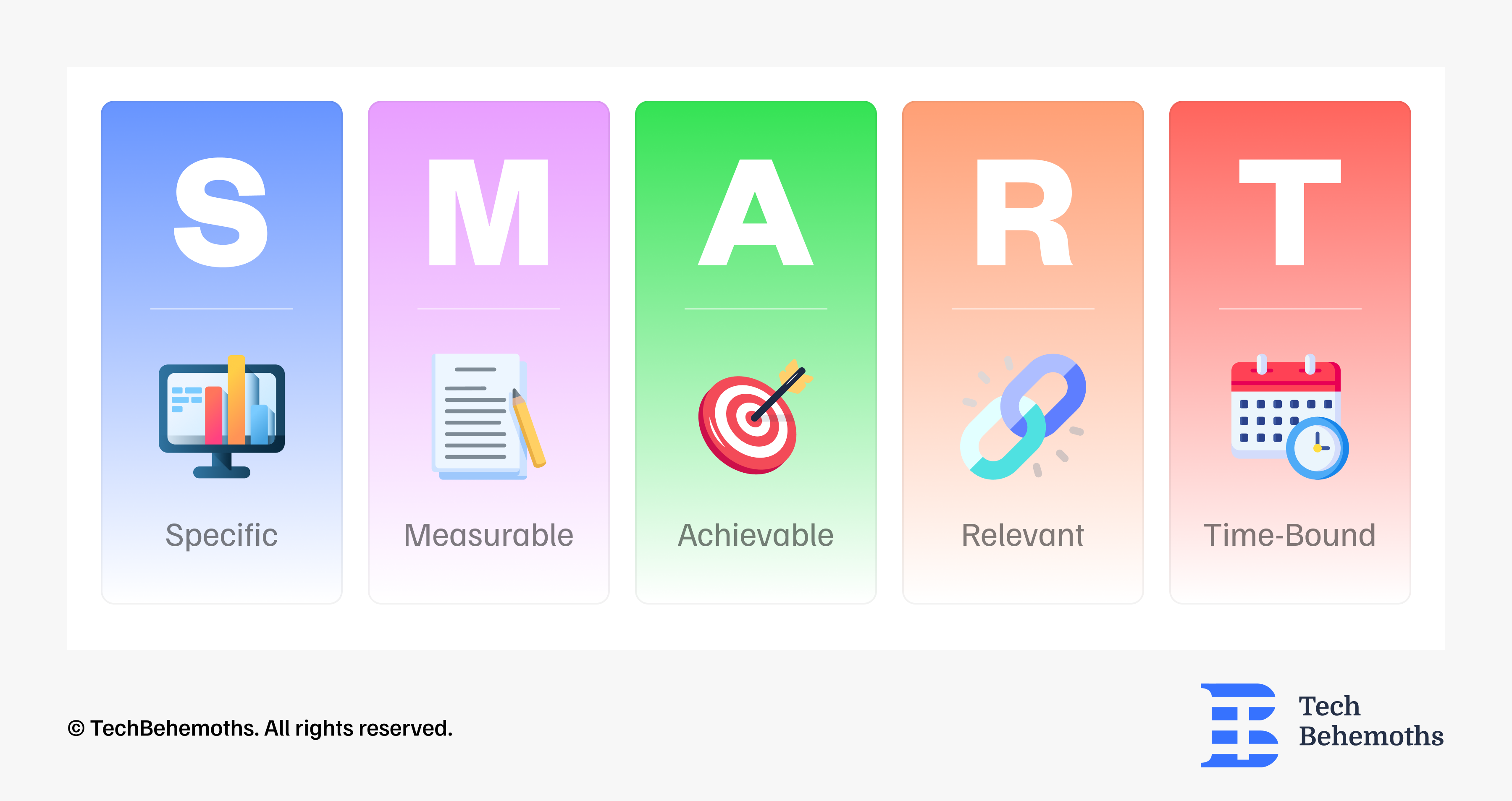
- Use simple prioritization frameworks like the Eisenhower Matrix or weighted scoring.

When everyone can see which initiatives have the highest impact, alignment becomes effortless and motivation rises naturally.
Tip #2: Create a Marketing Roadmap and Set KPIs
A marketing team works better when everyone can see the plan and understands what success looks like. A roadmap is a visual plan that brings structure and shows what you will do, when you will do it, and who is responsible. While clear KPIs connect each task to real results. A ResearchGate study found that tracking KPIs and employee performance explains about 62% of what makes an organization effective. Without both, teams end up reacting to last-minute requests, changing priorities, and unclear goals that weaken productivity.
The roadmap shows the work. The KPIs show the results.
How to apply it:
- Build a monthly or quarterly roadmap that maps out campaigns, deadlines, and owners.
- Set clear KPIs for each channel: traffic, leads, engagement, conversions, or revenue.
- Review performance regularly.
- Adjust the roadmap based on what’s working and what isn’t.

When your roadmap and KPIs work together, the team gains direction, clarity, and the ability to execute faster with stronger results.
Tip #3: Automate Repetitive Tasks & Use Templates
Reporting, formatting content, rebuilding assets, and other repetitive tasks take hours each week. These don’t require creativity, yet they use up valuable time. Using automation and templates, you can create a faster and more efficient workflow, saving time for high-impact work.
How to apply it:
- Use scheduling tools to automate post-publishing.
- Connect data sources to dashboards (Google Looker Studio, HubSpot, GA4) for instant updates. A 2025 survey by Tech Analytics found that organizations using productivity dashboards reported a 25% increase in project delivery efficiency.
- Set automated sequences in Mailchimp or HubSpot for welcome emails, reminders, and follow-ups.
- Utilize Canva and Figma templates for quick design variations.
- Create and store templates for social posts, blog outlines, and recurring emails in shared team spaces for easy access.
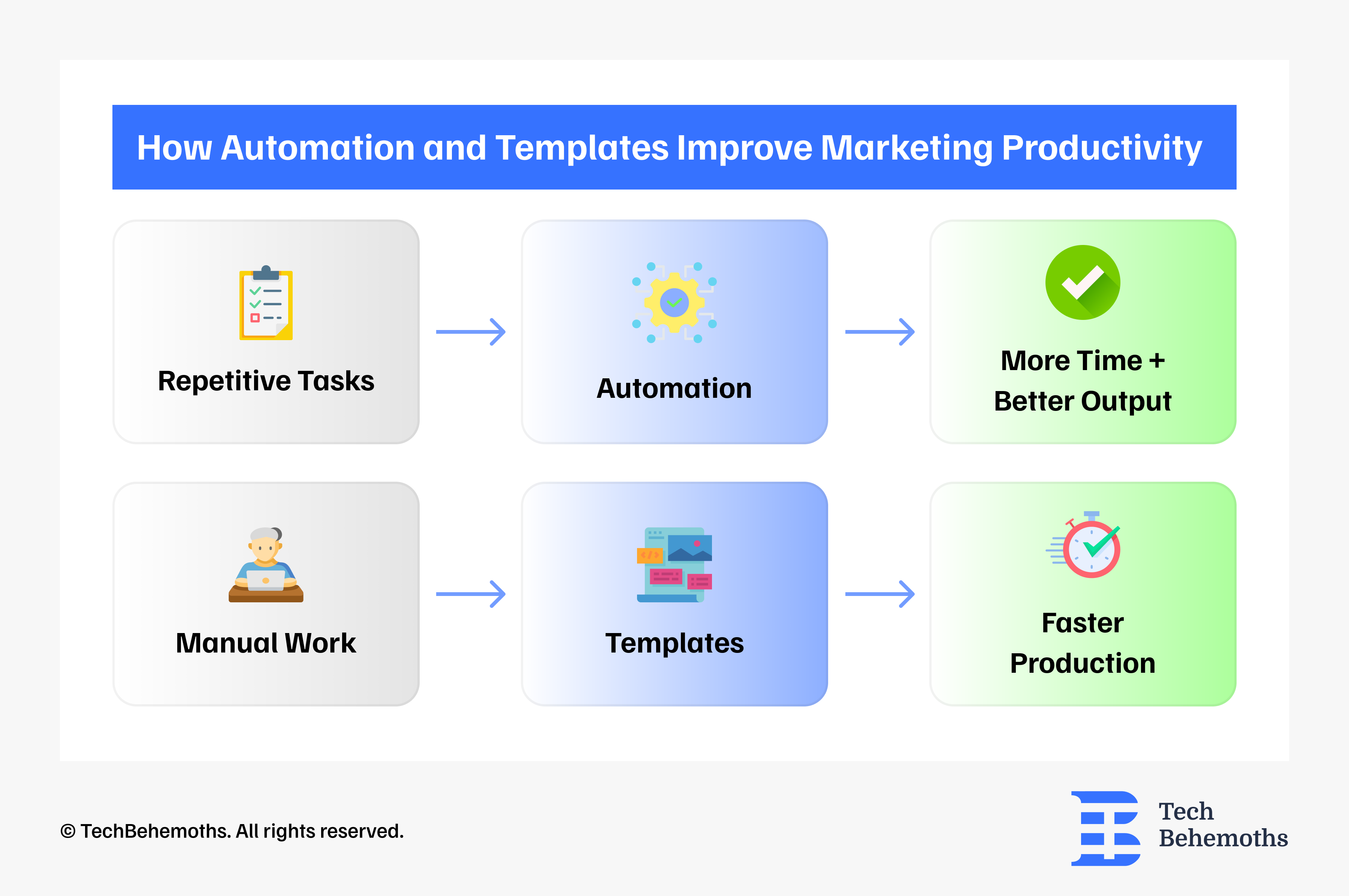
Tip #4: Use Tools That Improve Collaboration
The right tools make it easier to work together, while the wrong tools cause confusion. Marketing teams need intuitive, productive tools to stay organized and aligned.
How to apply it:
- Use Slack for quick communication, Asana for planning, and Figma for creative assets.

- Keep all documentation and assets in shared team workspaces, not in private folders.
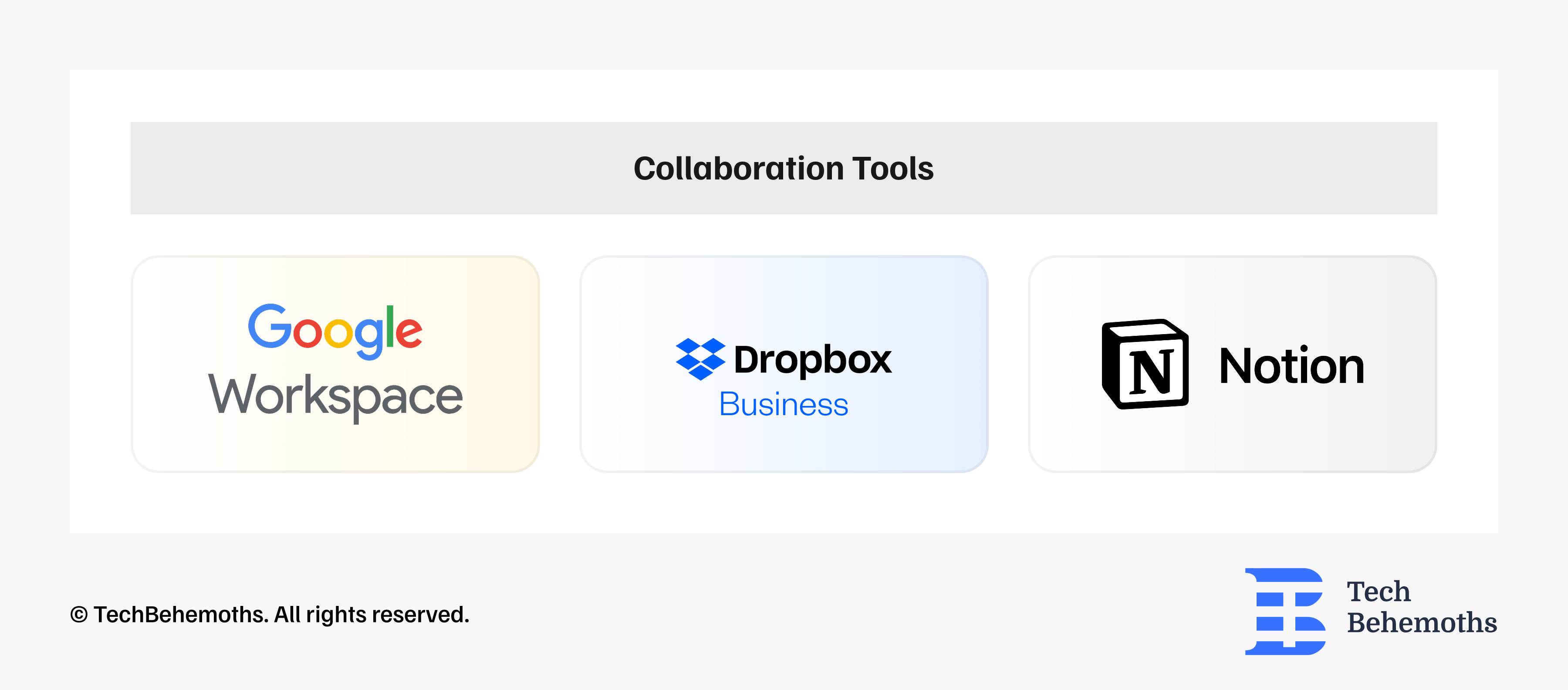
When tools support, not complicate, teams communicate faster and execute better.
Tip #5: Reduce Meetings and Over-Communication to Protect Focus
Organizations spend nearly 15% of their time in meetings, yet only 30% of those meetings are considered productive. Add to that the reply-all email chains, scattered Slack messages, “quick syncs,” and constant pings, and it becomes almost impossible to maintain deep focus.
Over-communication doesn’t create alignment; it quietly destroys productivity.
How to apply it:
- Set response-time expectations for email and Slack to avoid pressure for instant replies.
- Establish quiet hours or meeting-free days for uninterrupted focus and deep work.
When communication is intentional instead of constant, the team regains focus and the ability to do quality work without interruptions.
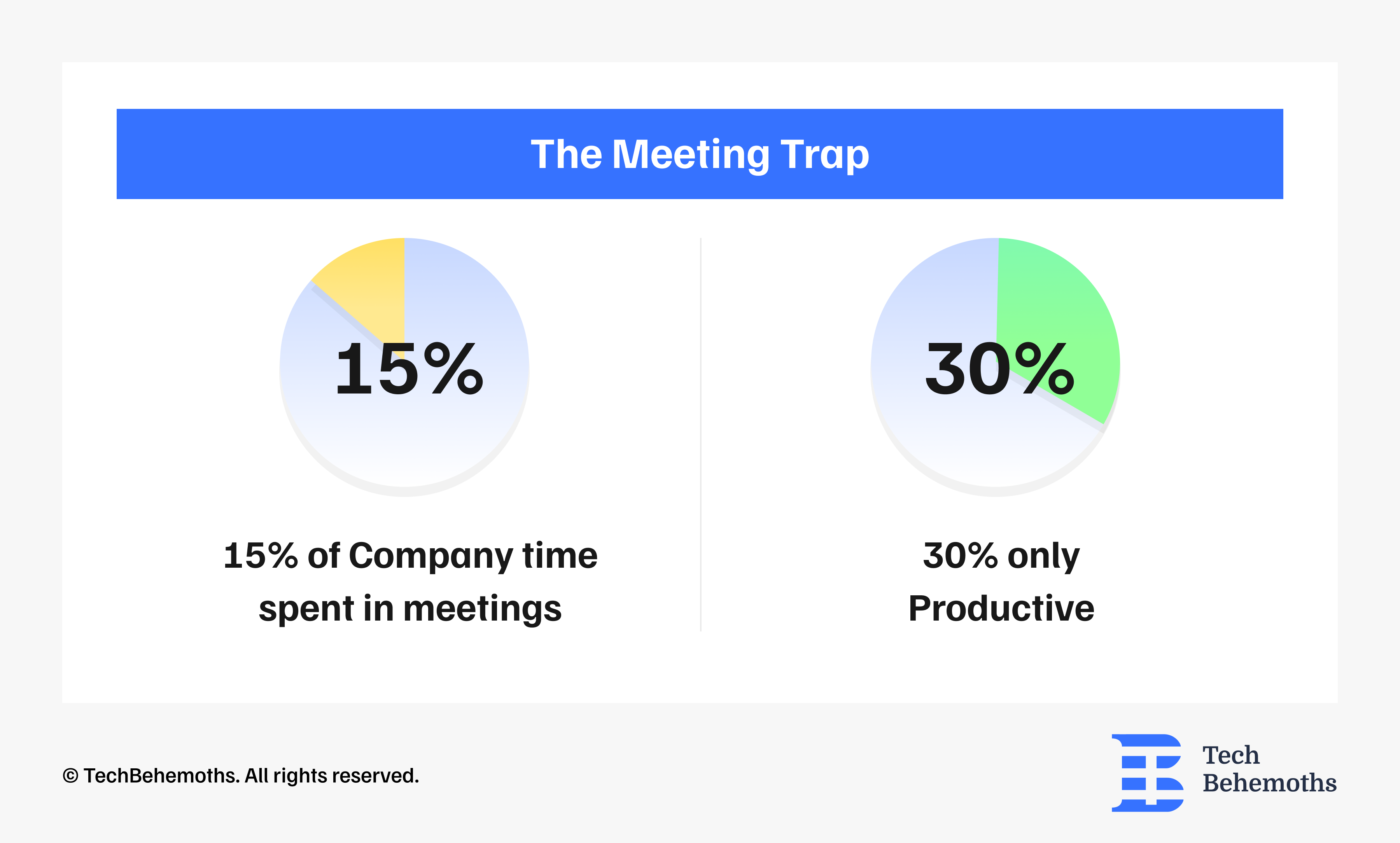
Tip #6: Encourage Experimentation: Try New Ideas
Research from Harvard Business School shows that companies using experimentation improve their performance by 30% to 100% within a year.
Trying new things isn’t just about creativity; it builds skills, strengthens your team’s capabilities.
When people are encouraged to explore, they bring fresh ideas and higher value to the table. Companies like Google, Amazon, Facebook, and HubSpot credit experimentation cultures for their sustained success.
How to apply it:
- Set aside time for your team to test new tools, emerging trends, and find ways to automate tasks.
- Encourage them to run small, low-risk tests, like A/B tests, new content types, or trial campaigns.
When innovation is part of the daily routine, your team becomes stronger, stays flexible, and finds smarter ways to get better results.
Tip #7: Embrace Continuous Learning
Foster a culture of curiosity and learning. This builds empathy and helps marketers understand how their contributions can connect to the broader business.
Support marketers in expanding their skills. Training isn’t a bonus. It’s a long-term investment in your team’s capability and confidence, and overall performance.
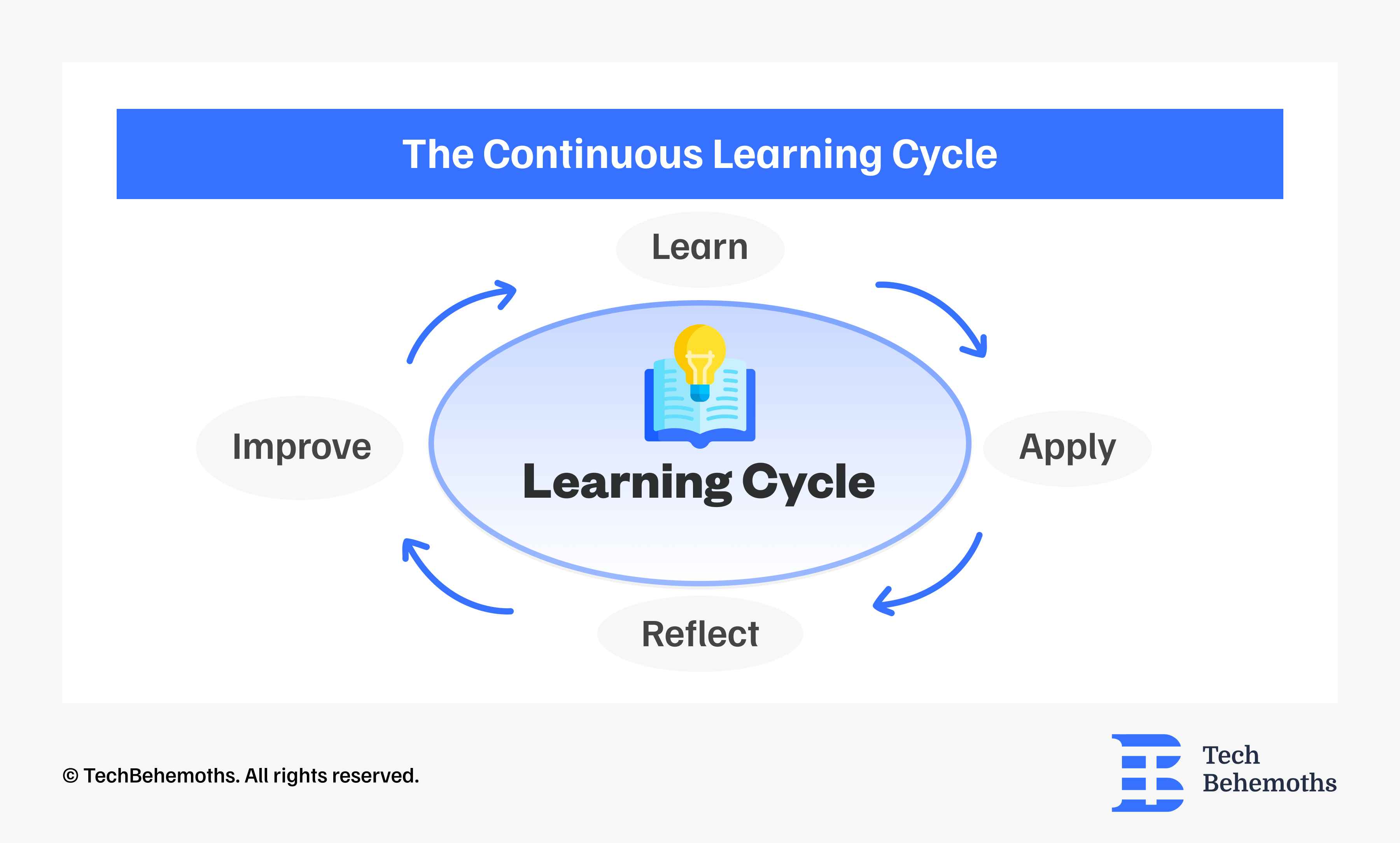
How to apply it:
- Organize cross-departmental learning sessions where each team explains their roles, workflows, and challenges.
- Offer access to workshops, conferences, certifications, or online courses so your team stays current with new tools and trends.
- Implement regular retrospectives after major campaigns to acknowledge strategies that succeeded, so you can replicate them and identify hiccups to avoid repeating mistakes.
When learning becomes part of the culture, your team becomes more knowledgeable and versatile.
When are Marketing Teams Most Productive?
Mornings are important for being productive. The Zety survey found that 52% of teams work best between 8:00 AM and 11:00 AM, when focus and creativity are highest. Another 33% stay productive between 11:00 AM and 2:00 PM.
After 2:00 PM, productivity drops sharply, with only 15% of people remaining highly focused. After lunch, energy and ability to think flexibly usually decrease, so afternoons are better for meetings, teamwork, and administrative tasks.
In remote or hybrid work setups, teams perform better when they work in focused time blocks. It's also a good idea to plan campaigns or brainstorm at the beginning of the week (Monday to Tuesday) when mental energy is highest.
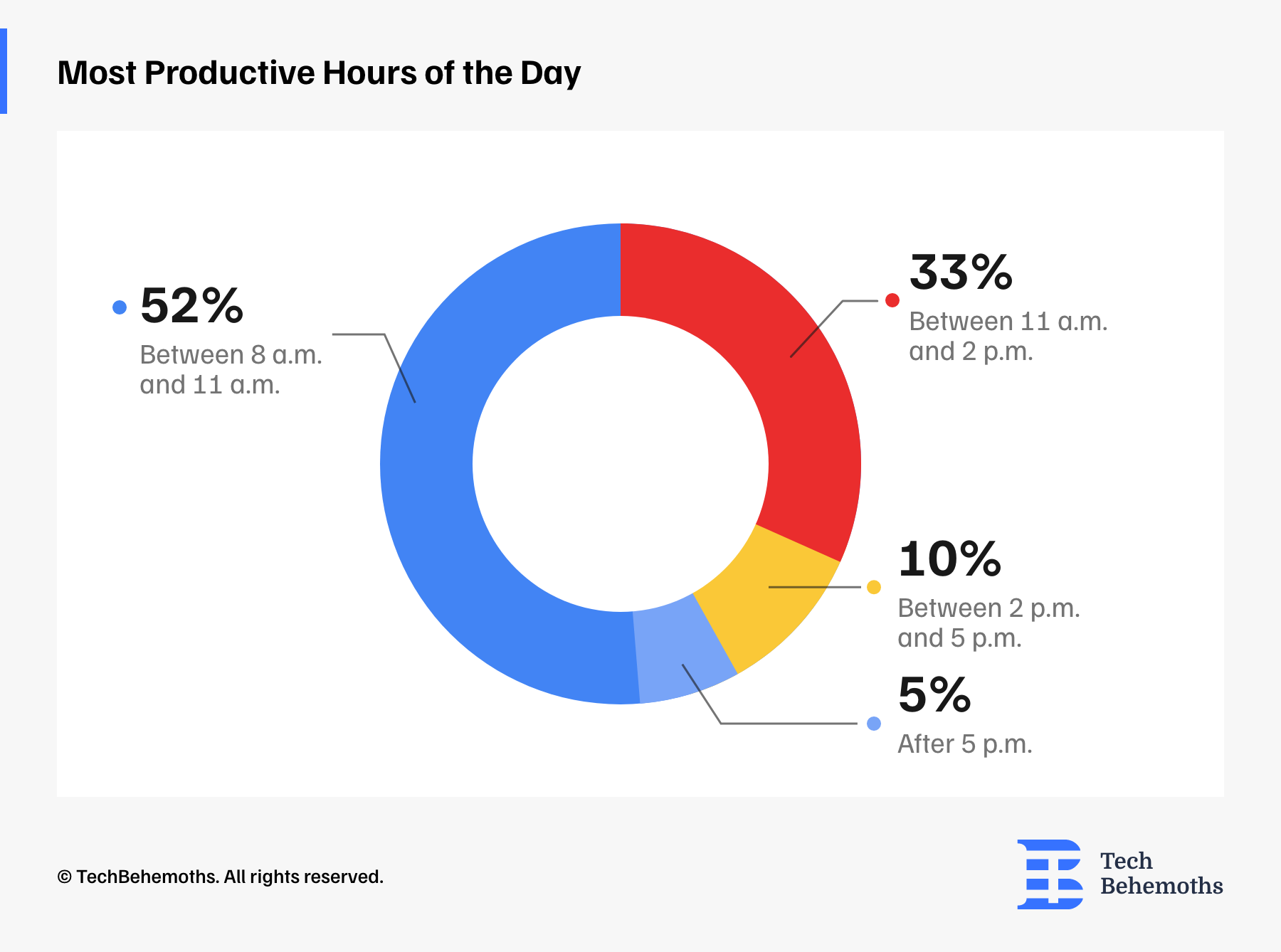
Knowing when you’re most productive is only half the equation; the next step is deciding how to use that time effectively. That’s where the 3–3–3 rule comes in.
The 3–3–3 Rule for Productivity
The 3–3–3 rule for productivity is a time management technique, especially useful for marketing teams working on multiple campaigns or content projects simultaneously. This rule is to help you focus during a busy workday:
1. Spend 3 hours on your most important task, the one that delivers results.
2. Spend 3 hours on shorter tasks, each lasting about an hour, that are also important.
3. Spend 3 quick actions on administrative work, like emails, follow-ups, and scheduling.
This plan helps you combine deep, creative work with daily responsibilities and prevents burnout by setting clear focus times.
Final Thoughts
True productivity isn’t about doing more; it’s about doing what matters most, with the right focus and energy. When marketing teams align clarity, tools, and creativity, results naturally follow.
The most productive teams:
- Protect focus and energy.
- Measure what truly matters.
- Learn, experiment, and grow continuously.
Productivity doesn’t happen by accident — it’s built intentionally, day by day.
Looking for a Marketing Company?
Check our list of top Marketing Strategy Agencies
Related Questions & Answers
Are small teams or big teams more productive?
What is the 80 20 rule for productivity?
What are the 5 Ps of Marketing?